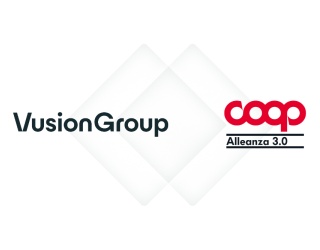
When brick-and-mortar retailers expand their business with an online store, software interfaces between online store, inventory management system and logistics need to work optimally to remain economically profitable. iXtenso spoke with Dr. Georg Wittmann of ibi research at the University of Regensburg GmbH on the benefit of standardization and the challenges particularly smaller retailers face when operating an additional online store.
Dr. Wittmann, what are the technical requirements during the implementation of an online store?
The technical requirements first pertain to the online store itself, but also the inventory management system behind it. What’s especially important here is the shop being the face of the online retailer. Customer demands need to take center stage in its design. This includes particularly how user-friendly the store is, for instance with intuitive navigation and a good search function, but also safety aspects.
The correct reproduction of internal processes in the operational systems needs to also be ensured. Through interfaces, the software needs to provide options to carry out processes such as distribution, payment or returns in an efficient and customer-friendly manner. For retailers that also run a brick-and-mortar store, an inventory management system that’s integrated across all distribution channels with a joint database lends itself to this.
What role do interfaces play?
Interfaces are essential for the data exchange between individual systems and processes. It might be suitable to use standardized interfaces as much as possible. This facilitates the connection to existing store solutions, but also the change in partners; it also ensures maximum flexibility. However, the use of standard interfaces might not always be possible.
After all, for the retailer it is particularly important that the software is adapted to business processes and not vice versa. This is why interfaces often need to be developed or rather programmed by the retailer himself. On the one hand, this means more work of course, while on the other hand it also ensures that the retailer’s needs are fully met.
How does an implementation of compatible IT solutions into already existing systems ideally look like?
Systems should ideally be synchronized with the retailer’s systems. When primarily standard solutions have been used previously, an implementation is usually relatively uncomplicated, because there are generally also standardized interfaces available for them. Otherwise, there often is a programming effort that should not be underestimated. A retailer should definitely consider this in his/her decision to purchase new IT systems.
There are often problems in this regard, when an established brick-and-mortar retailer wants to open up an online store and connect the old systems and often still not Internet-compatible applications with the online shop.
How important is an efficient system from an economic point of view?
For a retailer, an efficient, synchronized system is extremely important. This applies to the inventory management system even more than the online store, which the customer sees directly; as the connection between all business processes, the inventory management system represents the retailer’s control center so to speak. It facilitates efficient processes and also significantly contributes to customer satisfaction, for instance thanks to faster delivery times or current availability displays.
One problem for smaller retailers is that today it no longer makes much of a difference to customers whether they are dealing with a big online retailer with his/her own distributing warehouse or a smaller retailer, who operates the online store on the side. Expectations on delivery time, product availability or customer service are almost the same.
What role does the cost factor play when it comes to system updates?
Unfortunately, costs are often higher than expected, based on requirements and the chosen solutions of course. One of our studies revealed that approximately three-quarters of small businesses with annual sales of under one million Euros invested less than 5,000 Euros to launch an online store. However, of the medium-sized and large businesses, 44 percent incurred expenses in the five-digit range, 26 percent of them even in the six-digit range.
That said, for these companies, the necessary investments did not play the central role in their decision, but rather the easy adaptation with downstream systems. Of course, the launch of other systems, such as an inventory management system for instance, creates expenses that exceed the mentioned amounts. Costs for day-to-day operation or staff training have not been accounted for in these numbers.
ibi research offers the "Web-based Training E-Commerce" program. What is this about and whom does it address?
For several years now, we have supported online retailers, and those who want to become online retailers with a free handbook, which addresses essential E-commerce questions and provides compact and practical help for the most common problems on 400 pages. The handbook is currently in its third edition.
This year, with the web-based “E-Commerce für KMU“ training program, we also offer small and medium-sized companies the chance to obtain basic knowledge about organizational, technical or legal challenges on E-commerce through a free online course.
The interview was conducted by Natascha Mörs, First Publication EuroCIS.com









